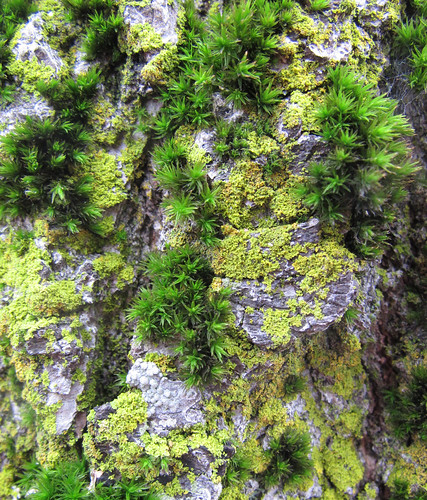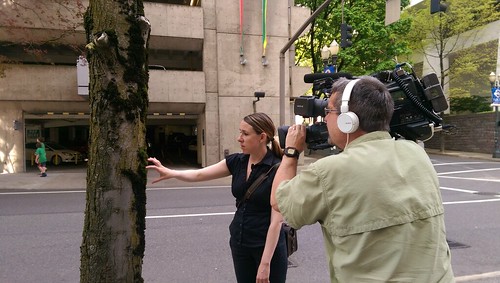
In December 2013 when Sarah Jovan and Geoffrey Donovan, two scientists with the U.S. Forest Service’s Pacific Northwest Research Station in Portland, Oregon, crisscrossed the northwest area of their city they had no idea they were onto something big. Armed with a ladder and collection equipment, the two spent most of that gray and rainy month carefully plucking hundreds of moss samples off the trunks of the city’s hardwood trees.
They were in relatively uncharted scientific territory, though their research focus seemed straightforward enough: determine if moss, in particular, the ubiquitous Lyell’s orthotrichum moss which grows abundantly across much of the city, could help measure urban air pollution.
The idea of using a plant as a barometer of environmental health was not new. For decades, the U.S. Forest Service has used moss and lichens as bioindicators, or living organisms that can help monitor forest health. But this study’s setting was a bustling city with more than 600,000 residents and countless businesses and potential pollution sources. Here the focus was on human health as part of the agency’s urban and community forestry mission.
Because moss lack roots, they absorb all of their water and nutrients from the atmosphere, much like mini sponges. In the process, they also take up and store whatever other compounds happen to be in the air—including pollutants. The scientists thought this might mean that Lyell’s orthotrichum moss could serve as a barometer of pollutants in the city’s air. But would it function this way in practice, in such a complex urban environment?
“Our moss and air quality study was definitely exploratory, but we received incredible support from the agency,” said Sarah Jovan, a research lichenologist based at the station’s Portland Forestry Sciences Laboratory and the study’s co-lead. “We suspected that this type of moss could be a bioindicator of air pollution, but weren’t sure what our study would reveal. However, we felt strongly that the research was worthwhile given the potential publication health implications.”
Jovan and Donovan personally gathered all 346 moss samples. Their findings, the first set of which were published recently in the journal Science of the Total Environment, identified two previously unknown hotspots of cadmium air pollution in the heart of Portland. This demonstrated that moss growing on urban trees can be a useful bioindicator of the heavy metal which is linked to major health problems like cancer and kidney disease.
More broadly, their study is the first to generate a rigorous and detailed map of air pollution in a U.S. city using moss and may ultimately lead to dramatic improvements in air-quality monitoring across the country. The study showed that moss can serve as a low-cost screening tool to help cities strategically place their expensive and limited instrumental air-quality monitors.
“In a way, we achieved the dream for bioindicator research,” Jovan said. “Many people regard bioindicator studies as sort of a quaint curiosity with most papers ending up in scientific journals with limited impact in the end. It’s tremendous that our moss study has provided a scientific basis for a vigorous public discussion about pollution.”

